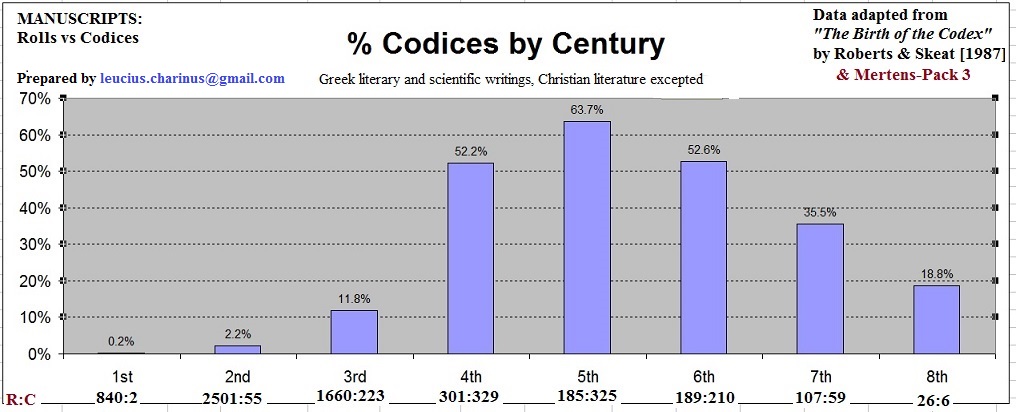Posted: Oct 06, 2015 6:07 am
Mike S wrote:
No doubt you’ve already scrutinized the links following
https://theosophical.wordpress.com/2011 ... us-papyri/
- In Hellenistic times, Oxyrhynchus was 3rd largest city in Egypt. Outside the city was a series of garbage dump sites, at which the inhabitants of Oxyrhynchus would dump their garbage. They dumped their garbage there for more than 1,000 years
This statement is quite misleading. By the mid 4th century there is strong evidence to suggest that the city of Oxyrhynchus had undergone a massive population explosion. A city of people had developed outside the city walls, and further rubbish dumps for this exclusively "Monkish Crowd" were obviously commissioned at this epoch during which the population demographics substantially increased. The total amount of tips at the city exceeds a dozen Considering this change in population size at this city, the above the cited statements on that webpage are inaccurate, since it may be inferred that additional tips outside the city were not in use prior to this population explosion.
From Historia Monachorum
- "The city is so full of monasteries
that the very walls resounded
with the voices of monks.
Other monasteries encircled it outside,
so that the outer city forms
another town alongside the inner.
Monks outnumbered the secular citizens.
There were more women that men.
My position / hypothesis is that the papyri from the city of Oxyrhynchus are just as, if not more likely, to have a provenance sourced with this mass migration of "Monks" (who may well have been literate and scribal in their nature) towards the mid 4th century.
Christian papyri from codices not rolls mitigates towards 4th century
The way I see it is that the following data and analysis supports this hypothesis. Practically all of the new testament related fragments appear to be sourced not from scrolls but from pages which were bound in codices - a sewn and folded book not a roll. If these fragments were to be dated even to the first half of the second century, then these fragments would be amongst the earlier surviving examples of a literary codex.
The following stats relate to non-biblical papyri, showing the move to codex technology in the 4th century.

We are left with two alternatives: either
a) the early Christians were the first to exclusively and universally use the codex in preference to the roll, or
b) the (palaeographic) dating for the early Christian manuscripts is wrong, and that they are really all from the 4th century.
Perhaps you support the hypothesis of C.H. Roberts, namely that "the codex was a deliberate innovation of Christian evangelists" [of the 2nd century]. This hypothesis appears to beg a theological agenda, and I reject it as wishful thinking on the part of C.H.Roberts and those who support him.